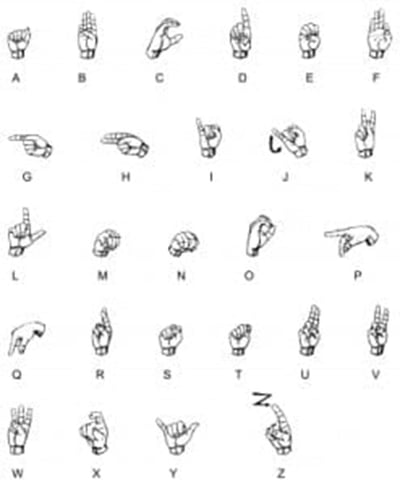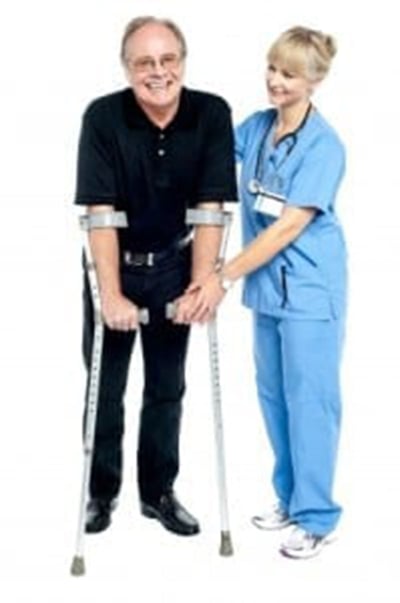A federal jury ruled in favor of a hearing-impaired former Creighton University School of Medicine student on September 5, 2013 in Omaha, Nebraska. The verdict from the controversial bias lawsuit sets a precedent for the rights of disabled medical students and doctors to study and practice medicine in the United States.
This is the first installment of our “Doctors and Diversity” series, focusing on how medical students and doctors are meeting the growing health care needs of Medically Underserved Areas (MUAs) and minority communities as the Affordable Care Act (ACA) is set to take effect on January 1, 2014. One of the goals of ACA and the U.S. Government is providing health care to minorities. A new federal report," Healthy People by 2020," outlines how doctors can meet goals regarding “disparities/inequity" in health care in areas of race/ethnicity; gender; socioeconomic status; disability status; LGBT status; and geography.
The UMHS Pulse takes a look at disability issues in medicine, from the rights of handicapped physicians to what advocates, medical associations, the government and the law say about proper treatment for physically challenged patients.
Disabled Doctors & Medical Students
 Michael Argenyi was accepted to Creighton University School of Medicine in Omaha in 2008. He informed the school that he was hearing impaired and needed interpreters and special equipment to attend lectures and communicate with patients. Mr. Argenyi was diagnosed as legally deaf at eight months old, and had similar accommodations for his disability from grade school to his undergraduate years at Seattle University.
Michael Argenyi was accepted to Creighton University School of Medicine in Omaha in 2008. He informed the school that he was hearing impaired and needed interpreters and special equipment to attend lectures and communicate with patients. Mr. Argenyi was diagnosed as legally deaf at eight months old, and had similar accommodations for his disability from grade school to his undergraduate years at Seattle University.
(Photo, inset right) SIGN OF THE TIMES: Hospitals & med schools must provide sign language interpreters for deaf students. Image: Xedos4/FreeDigitalPhotos.net
In 2009, after Creighton refused to provide Mr. Argenyi with “a real-time captioning system for lectures” and a “cued speech” interpreter during clinical training (he offered to pay for them), the medical student left and sued the school for discriminating against him because he is deaf.
The New York Times reported last month that one of the reasons the medical school denied Mr. Argenyi the requested accommodations was because Creighton felt patients “could be more hesitant to share information when someone else was present” and that doctors “needed to focus on the patient (not a third party) to rely on visual clues to make a proper diagnosis”. The medical school owns Creighton Alegent Medical Center, its teaching hospital in Omaha.
Mr. Argenyi’s attorney told the Associated Press that a judge will now decide whether Creighton will pay the student more than $110,000 as reimbursement for medical equipment he bought.
The U.S. does have many practicing disabled doctors, but they are a minority. Amednews.com cites a study published in the American Journal of Physical Medicine & Rehabilitation, based on data from back in 1996, estimating that just 0.2% of medical school graduates have some type of disability.
The number of disabled doctors has, of course, grown since the mid-1990s. The Society of Physicians with Disabilities is a branch of the Society of Healthcare Professionals. According to its website, the Society offers “resources and support for disabled physicians, physician assistants, and students” and fosters “a supportive community to provide resources and tools for disabled healthcare professionals and students, their family members, and their friends.”
The Society of Physicians with Disabilities assists disabled U.S. medical school students, from paraplegics to the hearing or visually impaired. In addition, the Society helps disabled doctors no longer able to work in traditional settings to find non-clinical jobs in medicine, and also get published.
The Americans with Disabilities Act was enacted in 1990, prohibiting discrimination against qualified job applicants with disabilities, but Amednews.com says few disabled students enter the medical field. “Medical students must be able to perform the essential functions of being a doctor, and each school determines for itself what these criteria are,” the website says.
The case of Michael Argenyi may change that. The national media attention his case received, and the federal jury’s verdict, could be groundbreaking indeed.
Curtis Decker, executive director of the Disability Rights Network, told the New York Times, last month before the verdict, that a victory for Mr. Argenyi would “send a very powerful message to the university community that the law does cover them [disabled medical students] and the law is clear about the accommodations that they [medical schools] need to provide.”
However, many disabled doctors say being handicapped can make it even harder for medical students to get a residency slot in the Match program at U.S. hospitals.
Most currently practicing disabled physicians acquired their disability sometime during their career. There are doctors with cerebral palsy, doctor in wheelchairs, and others who are either blind or deaf.
“Their practice situations run the gamut, as does their reception from colleagues,” Amednews.com says.” Some work within large institutions; others are in group or individual practices. A few find they are sought after, while others struggle to prove they won't be a liability to their peers or to their patients”.
The following technological advances help disabled doctors:
- Amplified stethoscopes or stethoscopes with a visual display for deaf doctors.
- Digital cuffs can be used to measure blood pressure.
- Text pagers that vibrate facilitate phone calls, and the federal government fully subsidizes phone and video translation services for the deaf.
Doctors Treating the Disabled: See the Patient First
 When doctors treat disabled patients, remember to see the patient first, and the disability second. That’s the sound advice of Deborah Kendrick, a Cincinnati-based advocate for people with disabilities.
When doctors treat disabled patients, remember to see the patient first, and the disability second. That’s the sound advice of Deborah Kendrick, a Cincinnati-based advocate for people with disabilities.
(Photo, inset right) LOOKING BEYOND DISABILITY: Doctors should see the patient first & the disability second. Photo: FreeDigitalPhotos.net
In a June 9, 2013 op-ed piece in the Columbus Dispatch, “Doctors Should be Prepared to Treat People with Disabilities”, Ms. Kendrick has sobering, harsh words for doctors unprepared to treat the disabled. “As the number of Americans with disabilities increases, and with it their need for appropriate and competent medical care, something has got to change,” Ms. Kendrick writes. “We could all waste time and money with litigation and finger-pointing. Or, physicians could simply begin stepping up to the plate, honoring their Hippocratic oath from way back whenever, and begin assembling the staff, training and equipment needed to treat all patients with equal dignity and competency.”
Under Title III of the Americans with Disabilities Act (ADA), U.S. doctors are required to provide interpreters for “medical visits and other medical-related situations”.
The U.S. Department of Justice’s website issued a statement on April 4, 2013 about how doctors must comply with the laws for treating disabled patients.
“Disability-based discrimination in health care is illegal under the Americans with Disabilities Act and will not be tolerated,” says Eve L. Hill, Senior Counselor to the Assistant Attorney General for the Civil Rights Division. “All types of health care providers – from hospitals to nursing homes, from surgeons to general practitioners – all across the country – need to provide equal access to people with disabilities, including people who are deaf. More than 20 years after passage of the ADA, the time for compliance is now.”
(Top photo) VERDICT EMPOWERS DISABLED DOCTORS: A landmark federal verdict in a bias lawsuit from a deaf med student has secured the rights of all disabled students & doctors to study & practice medicine in the U.S. Pictured: A model portraying a disabled doctor. Photo: Deposit Photos
About UMHS:
Built in the tradition of the best US universities, the University of Medicine and Health Sciencesfocuses on individual student attention, maintaining small class sizes and recruiting high-quality faculty. We call this unique approach, “personalized medical education,” and it’s what has led to our unprecedented 96% student retention rate, and outstanding residency placements across the US and Canada. UMHS is challenging everything you thought you knew about Caribbean medical schools.

Scott is Director of Digital Content & Alumni Communications Liaison at UMHS and editor of the UMHS Endeavour blog. When he's not writing about UMHS students, faculty, events, public health, alumni and UMHS research, he writes and edits Broadway theater reviews for a website he publishes in New York City, StageZine.com.
















